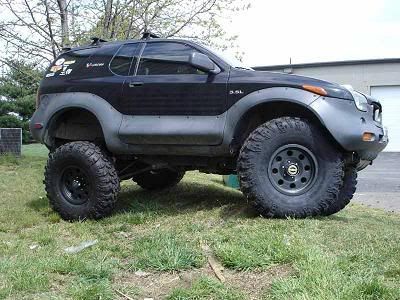
Originally Posted by
Chopper
Look, I'm a complete plebe when it comes to real offroading. I'm a pretty good wrench, and a real good body/paint guy... this is how I make a living. My question is... whats the deal, with a solid front axle? I spec (road) race as a hobby, and a solid axle is the anti-Kriste. Stronger? more articulation? ability to hook up some crazy, torquey rears? all the above? I don't get it.

One of the better things about solid axles when compared to IFS is the means of articulation. When one side of an IFS droops, that's it, it is at the end of it's travel, and so if it does get to that point, there is no available traction to that tire because there is no weight on that tire. All the weight at the front of the rig is on the opposing tire. Where as with a solid axle, one tire is stuffed into the wheel well until the axle hits the bump stop. When the axle hits the bump stop at one side the other side is forced downward - the bumpstop acts as a fulcrum or pivot point for the axle, so more weight/traction is sent to the drooping side than an IFS rig in the same situation. This can increase stability. To a lesser degree, even before the axle hits the bump stop the axle is tied to two springs instead of one so the same influence is on the axle even before it reaches max droop or compression.
Other pros to soild axle swaps are the ease of axle shaft replacement, lack of fragile CV's and boots (stronger U-joints), availability of parts (aftermarket and stock), increased suspension travel, general durability of parts, water resistance, etc. They are all 4x4 offroad improvements to get you in and out of the back country much more effectivley and efficiently.
I haven't been able to justify an SAS for my daily driver yet or I would already be under way - as long as my VX has been 2wd anyway I wouldn't have to complete the swap right away.
I would like to take the time to ask again, putting tires that big on an IFS equipped VX... is somebody eating Rice Crispies? 
Sent from my "two hands on a keyboard"






 Reply With Quote
Reply With Quote










